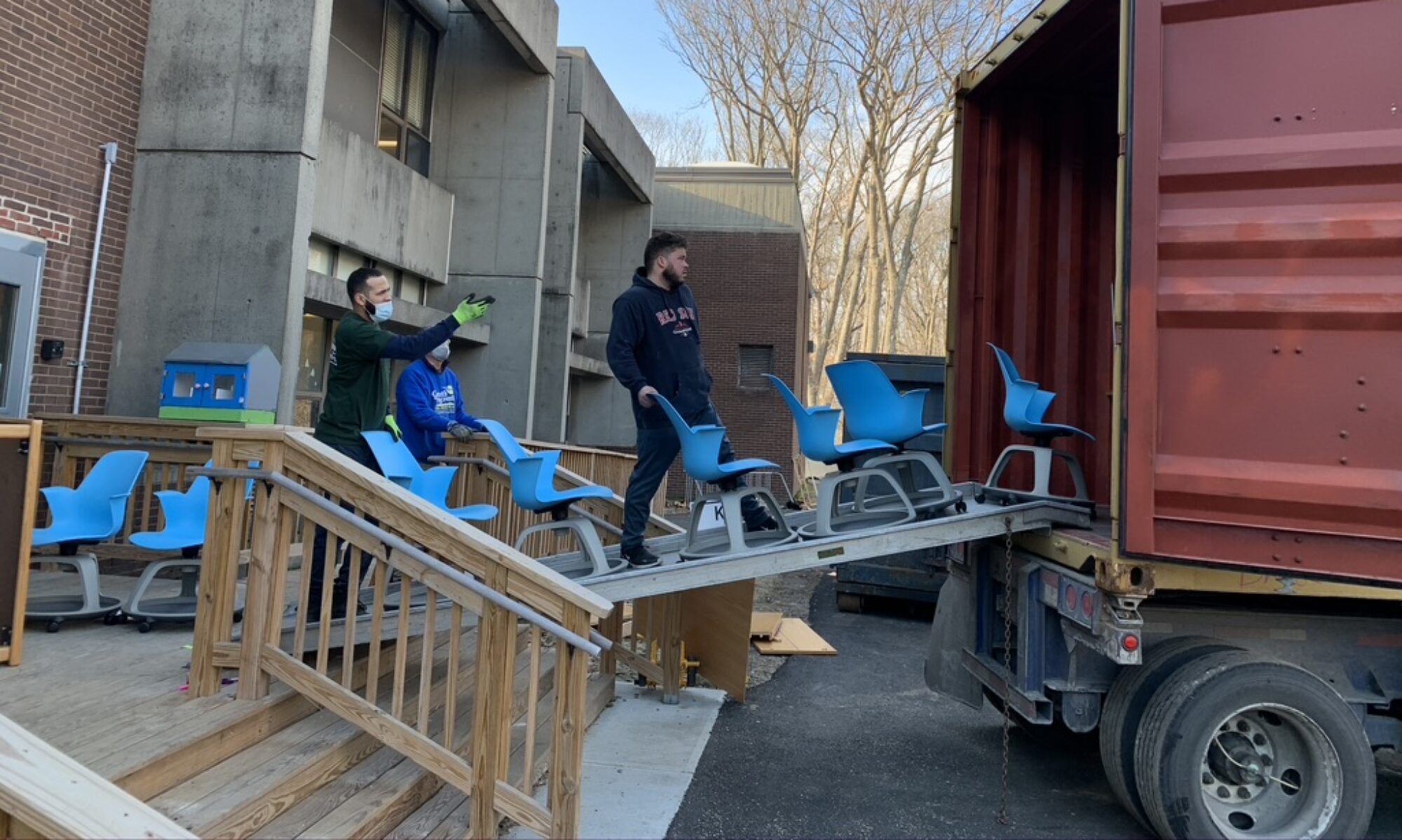IRN runs on a really dumb model: When it comes to getting stuff out of the waste stream, we try to be everything to everybody. A lot of the time we kick ourselves for trying to do so much.
But every now and then a project comes along to remind us that all the things we do aren’t separate jigsaw pieces. They fit together into a unified approach to resources, people, and economics. We’re not just helping people reuse and recycle. When the pieces come together, we’re demonstrating a new and sustainable economy.
Reality House in New York was a project like that. Reality House was an addiction clinic that closed down seven or eight years ago. They left a lot behind: Hundreds of boxes and file cabinets of documents; Dozens of computers and monitors; Hundreds of pieces of furniture. They had started and then quit fitting out a floor of office space, leaving behind metal framing and doors and wiring, and piles of other building materials.
Columbia University took over the building a couple of years ago. They rehabbed part of the building into offices. The rest was to be emptied and gutted. Columbia knew that IRN places a lot of surplus furniture for disaster relief, so they called to see if we wanted any of the stuff in Reality House.
When we saw it, Reality House was a nightmare. We couldn’t even get to the furniture, because it was jumbled with all that other crap.
Then a light went on that said, “It all fits together.” What if Columbia recovered not just the furniture, but everything else at the same time? The paper – recyclable. The computers and other electronic junk – recyclable. The building materials – reusable, and if not, recyclable. A “normal” demolition project would trash things like fluorescent lamps and ballasts that, by law, cannot go into the trash. But they can be recycled.
There was more. IRN manages a lot of deconstruction – dismantling structures to recover usable building materials. What if we deconstructed the partly built-out floors of Reality House to get building materials back into the community, and what if we used the project to train young workers in deconstruction techniques. New York doesn’t have any deconstruction crews, and deconstruction is one of the fastest growing parts of the Green Economy.
What we’d have, in short, was a project which would demonstrate that recycling does not mean just getting stuff out of the trash. Recycling means approaching used stuff in a way that seeks and finds its potential – as raw materials, as resources for people in need, as an engine for job creation and economic growth.
And that’s what we did. We teamed with Build It Green! NYC, a nonprofit that gathers and resells surplus building materials at low cost to New York residents; with Nontraditional Employment for Women, a nonprofit that works with New York’s unions to train women for skilled jobs in the construction trades; and with The School of Cooperative Technical Education, an alternative NYC school that provides at-risk students with training in trades‐based skills.
Over the course of a month last summer, IRN managed NEW and SCTE crews who removed nearly 70 tons of reusable and recyclable materials from Reality House. More than 3,000 pieces of furniture and building materials went back into New York communities through Build It Green. Two shipping containers of surplus furniture and supplies were sent for disaster relief in Nicaragua. More than 20 tons of scrap metal were recycled, along with 13 tons of paper and cardboard. The computers, monitors, fluorescents, and other universal wastes were recycled. Overall, more than 90% of the Reality House “junk” was reused or recycled; less than 10% was thrown away.
And more than 30 disadvantaged young men and women got serious job training, in a field that’s growing, where trained workers are much needed and much in demand.
Yes, so it’s dumb to try to do and be all things to all people in reuse and recycling. But it’s the nature of what we do. Recycling isn’t just getting one or two things out of the waste stream. It’s a different way of approaching the economy, it’s a big part of a new sustainable economics. It’s got a lot of pieces: deconstruction; construction material recovery; reuse; eliminating hazardous materials from the waste stream; returning multiple raw materials to productive use; training workers for a green career future. And saving money? Compared to calling in a wrecking crew, Columbia saved a bunch.
The pieces all fit together. And when they do, recycling doesn’t get any better.
